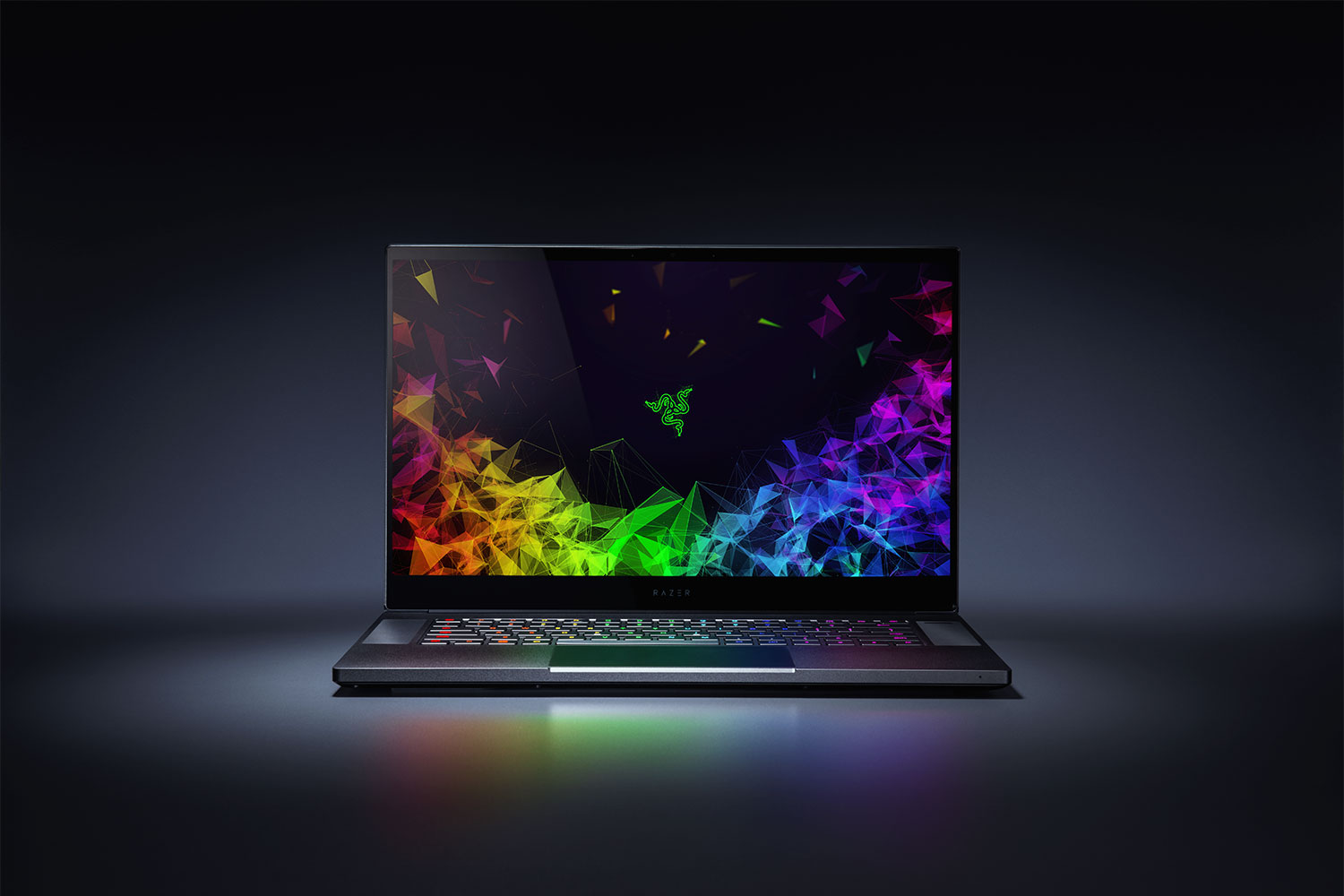Our Verdict
The Blade 15 delivers the best performance we've seen out of this generation's thin-and-light gaming laptops, but it's also more expensive.
For
- Exceptional build quality
- Great gaming performance
Against
- No Ethernet port
- Awkward keyboard layout
PC Gamer's got your back
Update: You're reading an article about the original Razer Blade 15, released in spring 2018. For the latest 2019 model review, including a detailed rundown of synthetic and anecdotal testing results, click here.
It's been around five years since Razer introduced the original Blade laptop. At the time, it was the gaming answer to the ever-popular MacBook form factor—14-inch body, aluminum chassis, solid clamshell design. Compared to its contemporaries, the Blade was miniscule, but gaming laptops have slimmed down in the years since, culminating in the Max-Q design we've seen in the best gaming laptops of the last year or so.
CPU: Intel Core i7-8750H
GPU: GeForce GTX 1070 Max-Q 8GB
RAM: 16GB DDR4-2667Hz
Display: 15.6” IPS with 144Hz refresh (1920x1080)
Storage: 512GB SSD
Battery: 80Wh
Connectivity: 3x Thunderbolt 3 USB 3.1 port, 1x Mini DisplayPort 1.4, 1x HDMI 2.0
OS: Windows 10 Home 64-bit
Weight: 4.63 lbs. including battery
Dimensions: 13.98" (355mm) x 9.25" (235mm) x 0.68" (17.3mm)
With the new Blade 15, launched earlier this year, Razer has finally caught up to the competition in terms of what makes a great gaming laptop. Solid construction, slim body, elegant design, long battery life, thin bezels, 144Hz screen, and internals powerful enough to play the latest games. That means an Intel Core i7-8750H processor paired with an Nvidia GeForce GTX 1070 Max-Q GPU.
What sets the Blade 15 apart from the competition is the details. Its aluminum body is the most solid and flex-resistant of all the laptops we've tested lately, and by a measure of about half a millimeter, it's the thinnest as well. Of course, that half-millimeter difference is mostly negligent in terms of perception—more impressive is the overall solid feel of the body, which Razer says is CNC-milled from a single block of aluminum. Opening the clamshell, the touchpad is noticeably larger than its peers, and the keyboard is flanked on either side by large speakers.
The keyboard, however, gave me a few problems. The keys themselves feel good to press, suitable for both typing and gaming. My problem came with the keyboard layout, which in addition to missing a number pad (forgivable, considering the space constraints) repositions the up-arrow key in between right-shift and forward-slash. If you're used to using right-shift + forward-slash for question marks, prepare to mess that up until you adjust to the new layout. Our other issue is with the touchpad—its large size feels great to use on its own, but caused me to accidentally tap it while typing a noticeable number of times.

Razer cultivates its brand with a gaming-first mentality, and that shows here in the Blade's benchmark performance. Despite a slightly thinner design than its peers (it's 17.2mm thick as compared to the MSI GS65's 17.7mm thickness), the Blade 15 performs slightly better in our gaming benchmarks. It averaged 92 fps across Rise of the Tomb Raider's three-part benchmark, measuring 144 fps in the Mountain Pass, 83 fps in Syria, and 78 fps in the Geothermal Valley. That's much closer to our zero point's 99 fps average (powered by a non Max-Q GTX 1070) in RotTR, compared to the mid-80s scores of the GS65 and Gigabyte's Aero 15X. Total War: Warhammer II and Ghost Recon: Wildlands similarly produced scores either in-line or a slight step up from the GS65 and Aero 15X—59 and 44 fps respectively—though the difference there was more in the realm of three to four frames as opposed to 10-plus.
The Blade pulls those scores off, despite its exceptionally small size, thanks to a vapor chamber cooling solution connected to the CPU and GPU. It keeps the internals from throttling under extended load, and more importantly keeps the outside of the Blade from getting too hot to handle during extended gaming sessions. After a lengthy stress test, I measured temperatures of around 130 F at the hottest points—above the keyboard—but the area around the WASD keys remained in the realm of a temperate 100 F. The bottom, of course, warms up to a point that's uncomfortable for on-lap use, but we've yet to meet a gaming laptop for which that wasn't the case.
The Blade 15 delivers everything we want in a gaming laptop, in one of the best-designed bodies we've seen. The build quality is top-notch, and gaming performance matches—the downside, of course, is price. The Blade 15 starts at $1,899, but that's for a GTX 1060 Max-Q GPU and a 60Hz screen. The GTX 1070 Max-Q models, like the one we tested, start at $2,399, with more expensive options if you want a larger SSD or a 4K panel. The Blade's probably the best-looking gaming laptop we've ever tested, but near-identical performance can be had from MSI's GS65 Stealth for a few hundred dollars cheaper. Choose your weapon wisely.
The Blade 15 delivers the best performance we've seen out of this generation's thin-and-light gaming laptops, but it's also more expensive.
As the former head of PC Gamer's hardware coverage, Bo was in charge of helping readers better understand and use PC hardware. He also headed up the buying guides, picking the best peripherals and components to spend your hard-earned money on. He can usually be found playing Overwatch, Apex Legends, or more likely, with his cats. He is now IGN's resident tech editor and PC hardware expert.



